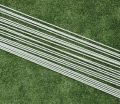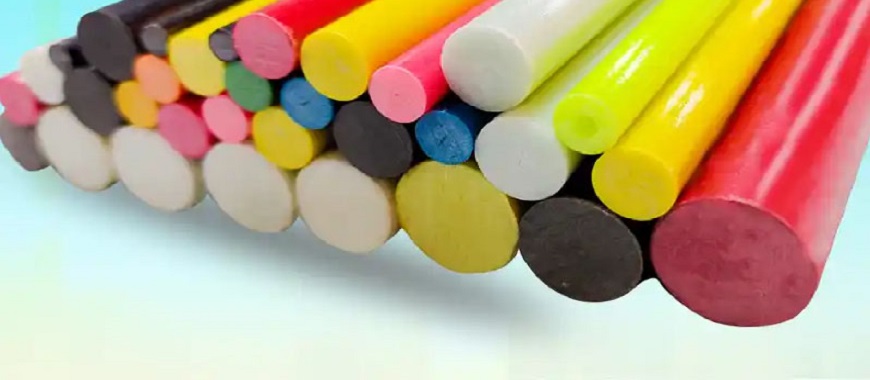
Can you reshape fiberglass rods? This question arises frequently among enthusiasts and professionals working with fiberglass materials. Fiberglass rods are widely used in various applications, from fishing rods to structural reinforcements, due to their strength and durability. However, the ability to reshape these rods can significantly enhance their functionality. Understanding reshaping techniques is crucial, as improper methods can lead to material failure or loss of structural integrity. Techniques such as heating can allow for bending, but it requires careful control to avoid damaging the epoxy resin that binds the fibers. Therefore, knowing how to effectively reshape fiberglass rods is essential for achieving desired outcomes in your projects. Can you reshape fiberglass rods? It’s challenging, but using plywood molds and epoxy can help achieve and hold the desired shape.
The Importance of Can You Reshape Fiberglass Rods?
The ability to reshape fiberglass rods is a question that many craftsmen and hobbyists face. Fiberglass rods are versatile and used in numerous applications, from fishing rods to structural components in construction. Understanding the nuances of reshaping these materials is essential for achieving the best performance in your projects. Can you reshape fiberglass rods? Yes, but it requires knowledge of the material’s fiberglass properties and careful techniques to avoid compromising its integrity.
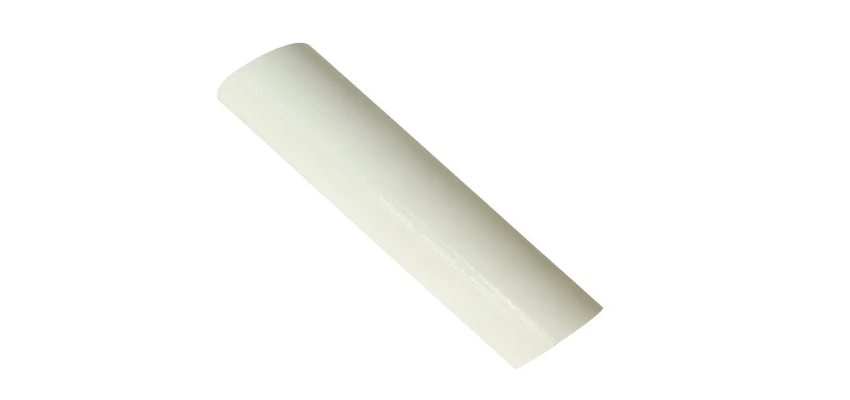
The Composition of Fiberglass Rods
Fiberglass rods are made from glass fibers embedded in a resin matrix, usually epoxy. This combination provides exceptional strength while remaining lightweight. The glass fibers are what give the rod its rigidity, making it an ideal choice for applications that require a sturdy structure. In some cases, hollow glass fiber is also incorporated into the rods to further enhance strength and flexibility. Understanding the composition helps determine how to manipulate the rods effectively. When considering reshaping, it’s crucial to keep in mind that while the fiberglass fibers themselves are resilient, the epoxy resin may behave differently when subjected to heat.
Techniques for Reshaping
One common method for reshaping fiberglass rods involves heating them. Applying heat to the rod allows the epoxy resin to soften, enabling the rod to bend. However, it is vital to control the temperature carefully. Excessive heat can lead to thermal decomposition of the epoxy, compromising the rod’s strength. Utilizing a heat gun or other controlled heat sources can help achieve the desired bend without damaging the fiberglass.
Another technique involves mechanical methods, such as using jigs or molds to create specific shapes. This method can be effective for achieving uniform bends and maintaining the structural integrity of the rod. Utilizing these methods requires a solid understanding of how fiberglass responds to mechanical stress and temperature changes.
Experiment Insights
Key findings from experiments on bending fiberglass rods reveal valuable insights into the material’s behavior under various conditions. When subjected to heat, the epoxy resin begins to soften, which allows for some bending. However, the key insight is that while the rod can bend, it does not always retain the desired shape once cooled. This behavior emphasizes the importance of carefully monitoring the heating process and ensuring that the rod is held in the desired position while it cools.
Moreover, epoxy resin’s behavior under heat can significantly impact the results of reshaping attempts. During experiments, it was observed that the resin could become pliable, but if the temperature exceeds a certain threshold, it could lead to damage. This highlights the necessity of understanding the thermal limits of the resin used in GangLong Fiberglass products.
Practical Applications of Can You Reshape Fiberglass Rods
Reshaping fiberglass rods has various practical applications. For instance, many artisans reshape rods for use in custom fishing poles or for crafting unique furniture designs. The ability to manipulate the rod allows for innovation in design, providing greater flexibility in meeting specific project requirements.
Additionally, reshaped fiberglass rods can be utilized for reinforcement in construction. By bending the rods to fit around curves or support specific structures, builders can create more efficient designs that enhance stability and aesthetics. Understanding how to reshape fiberglass rods opens new possibilities in these fields, leading to more creative and effective solutions.
Challenges in Reshaping
Despite the potential benefits, reshaping fiberglass rods is not without challenges. One significant challenge is ensuring that the reshaped rod maintains its strength and flexibility. During the reshaping process, there is a risk of creating weak points, which can compromise the overall integrity of the structure.
Another challenge is achieving consistent results. Variations in temperature, pressure, and the specific type of epoxy used can all affect how well the rod can be reshaped. Thus, it is essential to conduct trials and refine techniques to ensure that the reshaping process yields the desired outcomes.
Future Considerations for Reshaping Techniques
As technology evolves, so do the methods for reshaping fiberglass rods. Emerging techniques, such as the use of advanced composites or automated heating systems, promise to enhance the reshaping process. Exploring these innovations could lead to improved methods that maintain the rod’s integrity while allowing for more significant reshaping potential.
Moreover, the continued development of specialized resins that can withstand higher temperatures without losing their structural integrity may open up new avenues for reshaping. Research into such materials could lead to breakthroughs in the effectiveness of reshaping fiberglass rods, making them more versatile than ever.
The Role of GangLong Fiberglass in Reshaping
GangLong Fiberglass is at the forefront of providing high-quality fiberglass products that are suitable for reshaping. By using advanced materials and innovative manufacturing processes, GangLong Fiberglass ensures that their rods can withstand the rigors of bending and shaping. Understanding the capabilities of GangLong Fiberglass products can significantly enhance the reshaping experience, leading to successful outcomes in various applications.
Key benefits of using powder coated raceway for electrical wiring
The Key of Can You Reshape Fiberglass Rods
Reshaping fiberglass rods is a process that many users might consider for various applications, including fishing, construction, and crafting. Exploring the techniques involved in reshaping fiberglass rods can help you achieve desired shapes without compromising the material’s integrity. This guide will delve into effective methods and best practices, addressing common challenges encountered during the reshaping process.Can you reshape fiberglass rods?
The Key of Heating Methods
Heating is one of the primary techniques used to reshape fiberglass rods. The right equipment and techniques can help you achieve uniform bends without damaging the material. Typically, heat guns or ovens are used for this purpose. When using a heat gun, set it to a medium temperature and maintain a distance of about six inches from the rod. Move the gun back and forth to distribute heat evenly, ensuring you do not overheat any specific area.
Preparing the Fiberglass Rod
Before reshaping, it’s important to prepare the fiberglass rod properly. Ensure the rod is clean and free from dust or debris. If the rod has any coatings or finishes, these should be removed to allow for better heat absorption. Fiberglass cleaning rods can be used to remove stubborn residues or contaminants from the surface, ensuring a smoother finish for the reshaping process. Can you reshape fiberglass rods? By preparing the surface, you can enhance the effectiveness of the heating process and achieve a more precise reshaping.
Best Practices for Heating
When heating fiberglass rods, consider the following best practices to ensure success. Start by applying heat gradually, monitoring the flexibility of fiberglass rod. Fiberglass typically becomes pliable at temperatures between 200°F and 300°F. Use gloves to handle the rod once it reaches a suitable temperature, as it can become hot to the touch. Always prioritize safety by working in a well-ventilated area to avoid inhaling any fumes that may be released during the heating process.
Achieving Uniform Bends
One of the challenges in reshaping fiberglass rods is achieving uniform bends. To address this, use a jig or mold that corresponds to the desired shape. This can be made from wood, metal, or any other sturdy material that can withstand the heat. When the fiberglass is heated and pliable, place it into the mold and allow it to cool. This method will help create consistent bends while maintaining the structural integrity of the rod.
Key Features of Aluminum Channel for 1 4 Fiberglass Support
Cooling Techniques of Can You Reshape Fiberglass Rods
Once you have reshaped the fiberglass rod, it is crucial to cool it properly. Rapid cooling can cause stress in the material, leading to cracks or warping. To cool the rod, remove it from the heat source and place it in a safe area at room temperature. You can also use fans to promote even cooling but can you reshape fiberglass rods? This gradual cooling process helps maintain the new shape without damaging the material.
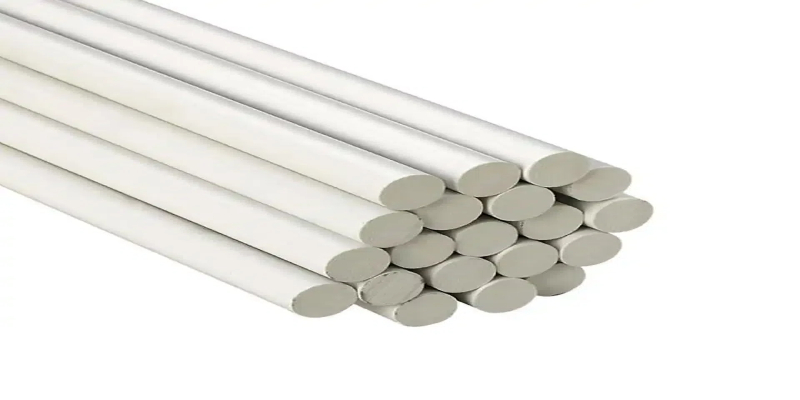
Challenges in Achieving Uniform Bends
When asking can you reshape fiberglass rods, it’s essential to acknowledge potential challenges. One common issue is achieving consistent thickness along the bend. Variations in thickness can affect the rod’s strength and flexibility. To minimize this problem, always heat the fiberglass evenly and apply consistent pressure when shaping. Using a pre-made mold can also assist in maintaining uniform thickness during the reshaping process.
Working with Different Fiberglass Types
Different types of fiberglass may respond uniquely to reshaping techniques. It’s important to identify the specific type of fiberglass rod you are working with, as some formulations may require different heating temperatures or techniques. GangLong Fiberglass rods, for instance, come in various formulations, each tailored for specific applications. Understanding these differences will help you select the most appropriate method for reshaping.
Safety Considerations
When working with fiberglass and heating equipment, safety should always be a priority. Wear protective gear such as gloves and safety goggles to safeguard against burns and airborne particles. Working in a well-ventilated space is also crucial to avoid inhaling any harmful fumes. Always have a fire extinguisher nearby, especially when using heat guns or ovens, to ensure a safe working environment.
Post-Reshaping Finishing Techniques
After reshaping fiberglass rods, consider applying a finishing technique to enhance their durability and appearance. A clear coat or sealant can protect the newly shaped areas from moisture and environmental wear. If the fiberglass was painted or coated previously, matching the new finish to the existing one will provide a seamless appearance.
Testing the Reshaped Rod
Once reshaped and finished, it’s important to test the fiberglass rod to ensure it meets your performance expectations. Depending on its intended use, you might want to conduct stress tests to assess its strength and flexibility. If the rod is for fishing, for instance, check that it can withstand the pressures expected during use without compromising its new shape.
Maintenance of Reshaped Fiberglass Rods
To extend the life of reshaped fiberglass rods, regular maintenance is essential. Store the rods in a cool, dry place away from direct sunlight, as UV rays can degrade the material over time. Inspect the rods periodically for signs of wear or damage, especially at the reshaped areas. By maintaining your fiberglass rods properly, you can ensure they remain functional and visually appealing for years to come.
The Key of Reshaping Techniques for Future Projects
The techniques learned through the reshaping process can be applied to various future projects. Whether you are crafting new items or modifying existing ones, the skills gained will enhance your versatility in working with fiberglass. As you continue to explore the possibilities, the question of can you reshape fiberglass rods will undoubtedly lead to new creative opportunities.
Reshaping fiberglass rods is a feasible and rewarding endeavor when approached with the right knowledge and tools. By following the outlined techniques and best practices, you can achieve the desired results without compromising the integrity of the material. With GangLong Fiberglass products, you have the quality and flexibility needed to take on a wide range of projects successfully.
Essential tools for fiberglass cutting using a reliable angle grinder
What Characteristics Affect Whether You Can Reshape Fiberglass Rods?
Can you reshape fiberglass rods? This question depends on the properties of fiberglass rods, which are influenced by their composition, structure, and curing process. These factors determine whether reshaping is feasible, the limitations involved, and the methods that may or may not work. Below, we explore the key characteristics of fiberglass rods that impact their ability to be reshaped.
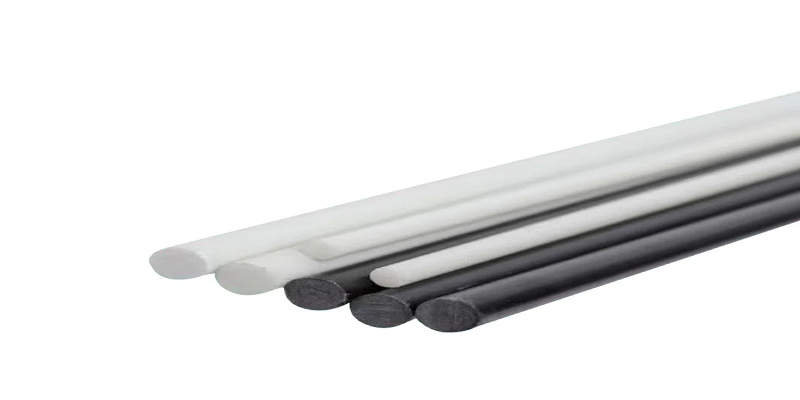
Material Composition
The composition of fiberglass rods plays a significant role in reshaping.
- Description: Fiberglass rods are made of glass fibers embedded in a resin matrix. This thermoset resin hardens permanently during curing, giving the rod its shape and rigidity. Unlike thermoplastics, this type of resin cannot be melted and reformed. Attempting to reshape the material through heat or force often leads to fiber breakage or structural damage.
- Impact on Reshaping: The fixed, hardened state of thermoset resins makes significant reshaping nearly impossible once the rod has cured.
Structural Rigidity
The physical structure and rigidity of fiberglass rods influence their ability to be reshaped.
- Description: Fiberglass rods are designed to be strong yet flexible, allowing them to withstand bending forces without permanent deformation. However, this flexibility is elastic, meaning they return to their original shape once the stress is removed.
- Impact on Reshaping: While rods can flex under load, their inability to retain a new shape limits reshaping options without external support, such as molds or adhesives.
Curing Process
The curing process locks fiberglass rods into their final form, affecting reshaping potential.
- Description: During manufacturing, fiberglass rods undergo curing, a chemical reaction that hardens the resin and bonds it to the fibers. Once cured, the material becomes highly resistant to heat and deformation.
- Impact on Reshaping: The permanent bond created during curing means reshaping requires methods like using molds and epoxy rather than heat or force alone.
External Support for Shaping
Using external supports can aid in reshaping fiberglass rods within limitations.
- Description: While heat or bending alone isn’t effective, shaping methods such as using thick plywood molds and applying epoxy can help hold new forms. These techniques rely on external reinforcements rather than altering the inherent properties of the rod.
- Impact on Reshaping: These methods allow some degree of reshaping, but they are labor-intensive and suited only for specific applications.
Can you reshape fiberglass rods? While the inherent characteristics of fiberglass make traditional reshaping methods impractical, innovative approaches like external molds and adhesives can help achieve desired shapes for specific projects.
Can You Reshape Fiberglass Rods? Methods for Modifying and Adapting Fiberglass Rods
Can you reshape fiberglass rods? While reshaping cured fiberglass rods is challenging due to their rigidity and thermoset properties, several methods exist to modify them for different applications. These methods include reshaping during manufacturing, cutting and reconnecting, or making adaptations with additional tools and materials. Below, we explore both conventional and alternative approaches to modifying fiberglass rods.
Cutting and Reconnecting
For significant changes to the rod’s structure, cutting and reconnecting is a practical solution.
- Description: If the rod’s dimensions or angles need significant adjustments, cutting it into sections and reconnecting the parts with strong adhesives or mechanical couplings is an effective strategy. This approach is useful when the desired shape cannot be achieved through other means.
- Specific Method: Use a carbide-tipped saw or diamond blade to cleanly cut the rod. To reconnect, apply a high-strength epoxy adhesive designed for fiberglass materials. Mechanical connectors, like couplers, can also provide additional reinforcement.
Using Molds During Manufacturing
For custom shapes, molds offer the most efficient way to shape fiberglass rods.
- Description: The most effective way to reshape fiberglass rods is during the initial manufacturing process when the material is still malleable. Creating a custom mold ensures that the cured rod takes on the exact desired shape.
- Specific Method: Design a mold using plywood, metal, or other sturdy materials. Lay uncured fiberglass material into the mold and allow it to cure fully to achieve a permanent shape.
Heating for Temporary Adjustments
Though not suitable for permanent reshaping, heat can assist with minor adjustments.
- Description: Applying heat to fiberglass rods can temporarily soften the resin, allowing for slight bending or alignment corrections. However, this method should be used cautiously to avoid damaging the fibers or weakening the structure.
- Specific Method: Use a heat gun at a low temperature, and apply heat evenly to the area needing adjustment. Bend the rod gently and secure it in place while it cools. Avoid excessive heat, as it can cause irreversible damage.
Adding Reinforcements for Structural Changes
Reinforcements can help modify the rod’s performance or shape without cutting or bending.
- Description: When reshaping isn’t viable, reinforcing the rod with external materials, like additional layers of fiberglass or adhesives, can alter its structural properties. This method is ideal for strengthening weak areas or adding new functional features.
- Specific Method: Sand the area to be reinforced, apply epoxy resin, and layer additional fiberglass fabric over the section. Let it cure completely for added strength.
Drilling and Custom Fittings
Adding holes or fittings is another way to adapt fiberglass rods without changing their core shape.
- Description: Drilling into fiberglass rods allows for attachments, extensions, or integration into other structures. This method avoids reshaping but provides significant flexibility for modifications.
- Specific Method: Use a sharp, carbide-tipped drill bit and operate at low speeds to minimize splintering. Apply protective coatings or resin to drilled areas to maintain structural integrity.
Can you reshape fiberglass rods? While traditional reshaping is limited, methods like cutting and reconnecting, mold-based manufacturing, heating for temporary adjustments, adding reinforcements, and drilling with custom fittings offer innovative solutions for modifying fiberglass rods to suit various applications.
FAQs about Can You Reshape Fiberglass Rods
Bending fiberglass rebar, which is commonly used in construction for reinforcement, is generally not advisable. Unlike traditional steel rebar, fiberglass rebar is designed to be rigid and provide strength without the flexibility that allows for bending. Attempting to bend fiberglass rebar can lead to cracking or breaking, which compromises its structural integrity. If a project requires a specific shape or angle, it’s better to cut the fiberglass rebar to the required length and use connectors or additional pieces to achieve the desired configuration. For applications that involve curves or unique shapes, consider using prefabricated fiberglass rebar solutions that are designed for such purposes. Always consult engineering specifications and guidelines to ensure safety and compliance with building codes when working with fiberglass rebar in construction projects.
Reshaping a fiberglass splint is generally possible, especially if it’s necessary to accommodate changes in a patient’s condition or to provide better support. However, it’s essential to approach this task carefully. If the splint is heated, the resin can soften, allowing for some degree of reshaping. You can use a heat gun or immerse the splint in warm water to achieve this. Be cautious not to overheat, as this can damage the fiberglass and affect its performance. Once the splint is softened, gently bend it into the desired shape. After reshaping, allow it to cool in position to retain the new form. Always consult with a healthcare professional before altering a medical device to ensure it continues to provide the necessary support and does not compromise safety.
Yes, fiberglass can be reshaped, but the method used will depend on the specific application and the type of fiberglass involved. For items like boat hulls or automotive parts, reshaping typically involves heating the fiberglass to soften the resin. Once the material is pliable, it can be molded into the desired shape. However, this requires careful temperature control to avoid damaging the fiberglass. For smaller items, such as sculptures or crafts, fiberglass can be cut and then reassembled using adhesives or additional fiberglass layers. It’s important to note that reshaping fiberglass may alter its structural integrity, so it’s crucial to evaluate whether the reshaped item will still meet performance requirements. Always consult manufacturer guidelines or a professional if you’re unsure about the reshaping process for a specific application.
Fiberglass rebar cannot be heated and bent without compromising its structural integrity. Unlike steel rebar, fiberglass rebar (made from glass fibers and resin) does not have ductility, meaning it cannot be reshaped without causing microfractures or permanent damage to the material. The resin component in fiberglass rebar softens under heat, but this does not allow for clean or reliable bending; instead, it weakens the overall strength and durability. If specific shapes are needed, it’s better to order pre-formed fiberglass rebar designed for the desired application.
Fiberglass rods are generally less strong but more flexible than graphite rods. Graphite rods excel in stiffness, sensitivity, and tensile strength, making them ideal for precise casting and handling heavy loads. Fiberglass rods, while not as strong in tensile terms, offer superior flexibility and durability, making them less likely to break under stress. For reshaping, fiberglass’s flexibility is an advantage, but it still resists bending permanently.
Yes, fiberglass rods are highly flexible, which is one of their defining features. This flexibility makes them ideal for applications requiring bending without breaking, such as fishing rods and tent poles. While fiberglass rods are bendable under stress, they are not designed to retain a new shape after bending. For reshaping purposes, excessive force or heat can damage their structural integrity.
Fiberglass rods can be threaded, but this process requires care. Specialized tools, such as carbide-tipped thread cutters, are necessary to cut threads without splintering the fiberglass. Threading weakens the rod at the threaded section, so it should be done only in applications where strength is not critical. For reshaping, threading may allow for better joining, but the structural implications should be considered.
Yes, fiberglass rods can use tackle, and they are a popular choice for fishing rods due to their flexibility and durability. They can handle various fishing scenarios, including those requiring significant bend or tension. However, while they are durable under regular use, attempting to reshape a fiberglass fishing rod with tackle attachments may compromise its strength.
Fishing rods, including fiberglass rods, should not be stored bent for extended periods. Prolonged bending can cause warping or permanent deformation, especially if subjected to heat or heavy stress. To maintain their shape and performance, store fishing rods in a straight, unbent position. Reshaping a bent rod afterward is challenging and often results in a weaker rod.
No, bending fiberglass rebar with heat is not recommended because it damages the material’s structural integrity. The heat may soften the resin, but this compromises the bond between the fibers and the resin, resulting in reduced strength. If bending is unavoidable, pre-formed shapes should be ordered from the manufacturer.
Yes, fiberglass rods can be cut using appropriate tools like carbide-tipped saws, diamond blades, or abrasive cutoff wheels. Care should be taken to minimize splintering, and protective equipment should be worn to avoid inhaling fiberglass dust. Cutting is a common way to adjust the size of fiberglass rods, but reshaping involves more challenges due to the material’s rigidity.
Yes, spinners can be used on fiberglass fishing rods. The flexibility of fiberglass rods makes them well-suited for various fishing techniques, including spinning. They provide the strength needed to handle the movement of spinners without easily snapping, but reshaping the rod for spinner-specific applications is impractical.
Fiberglass rods do not have a distinct spine like some graphite rods. The lack of a pronounced spine means they bend more uniformly in all directions. This uniformity contributes to their flexibility and durability, but it also means they are not easily reshaped into a new, specific curve or orientation.
Fiberglass rods can be joined using connectors, adhesives, or fittings designed for composite materials. Mechanical connectors, such as couplers, are commonly used for structural purposes. Alternatively, epoxy adhesives can bond rods permanently. When joining rods, ensure that the connection can withstand the intended loads without weakening.
If a fiberglass fishing rod becomes locked or stuck, it’s usually due to tight joints or ferrules. Gently apply heat to the stuck section using warm water or a hairdryer to expand the material slightly, then twist carefully. For reshaping, heat application is not advisable as it weakens the rod.
Bending fiberglass rebar is not practical or recommended. If bending is required, manufacturers should supply pre-formed shapes. Attempts to bend fiberglass rebar using heat or force will likely result in cracking or internal damage that compromises strength.
Straightening a fiberglass fishing rod is challenging and not always successful. Applying gentle heat with a hairdryer and carefully bending it back into shape may help, but the rod’s structural integrity could be affected. Preventive care, such as storing rods properly, is the best way to maintain their straightness.
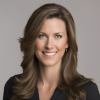
As the editor of GangLong Fiberglass, I have years of experience and in-depth research, focusing on cable tray products, fiberglass solutions, and grille systems. I incorporate years of industry insights and practical experience into every content, committed to promoting the progress of the industry. At GangLong Fiberglass, my commitment is reflected in every product, from innovative cable trays to durable fiberglass solutions and sturdy grille systems. As an authoritative voice in the industry, my goal is to provide valuable information to professionals and businesses and promote forward-looking solutions.

